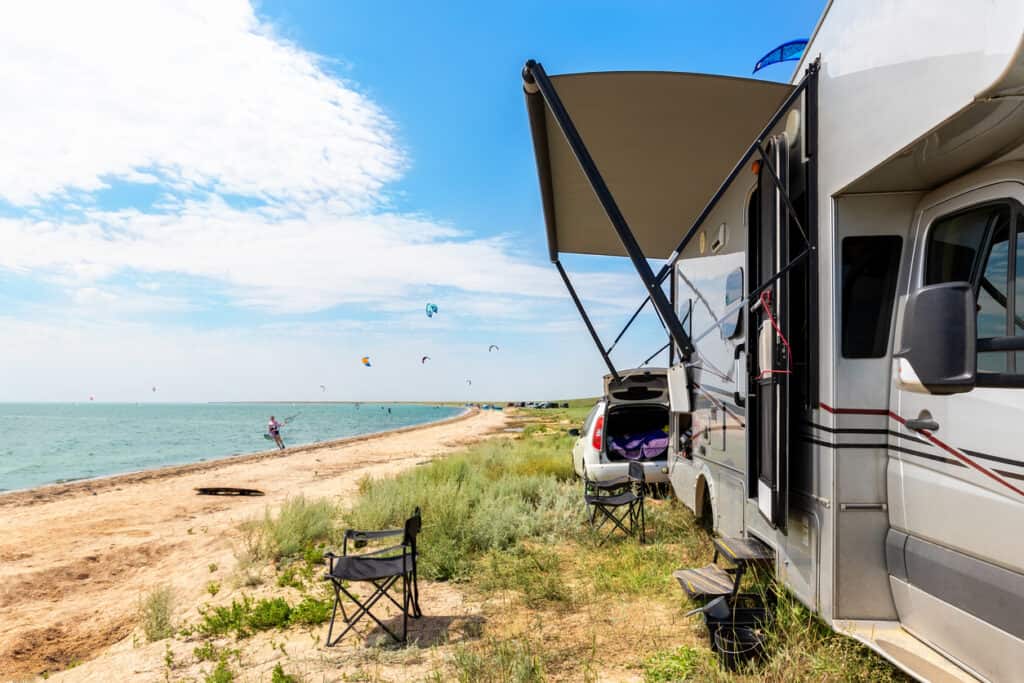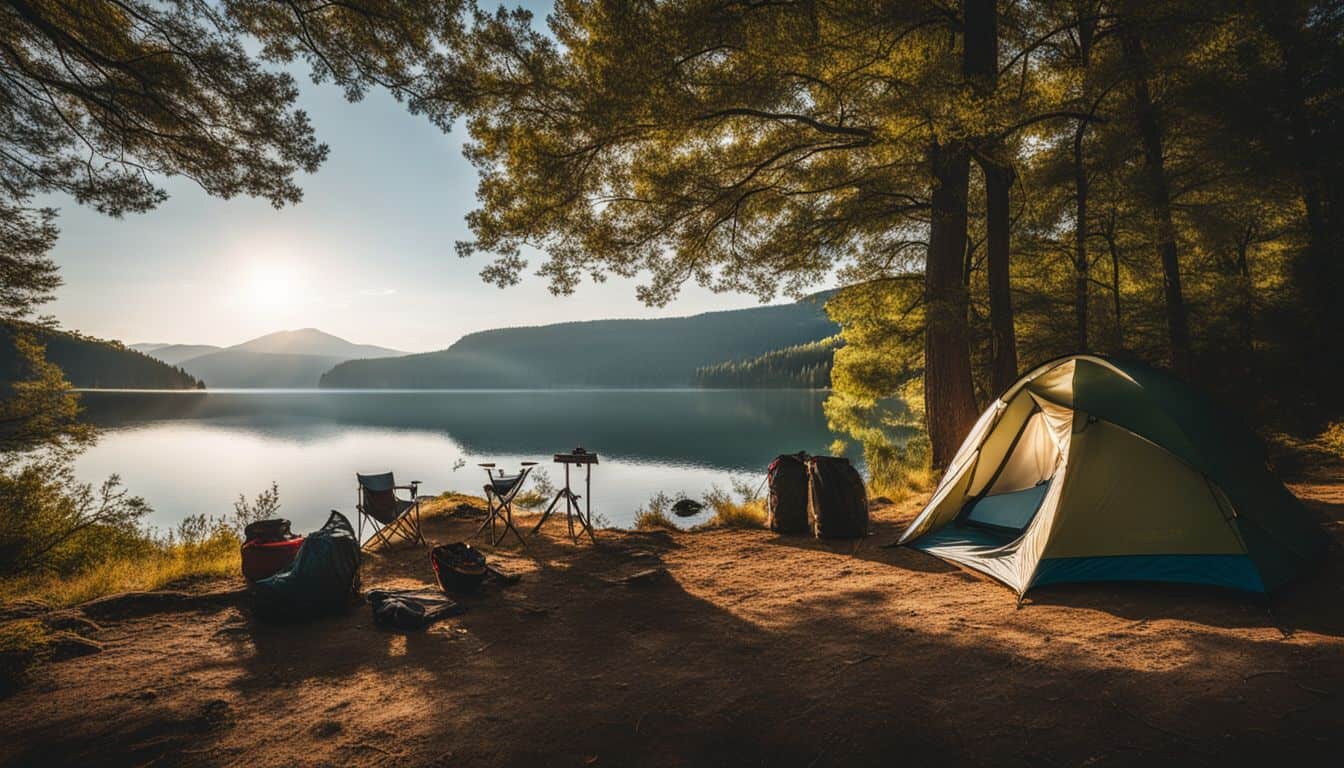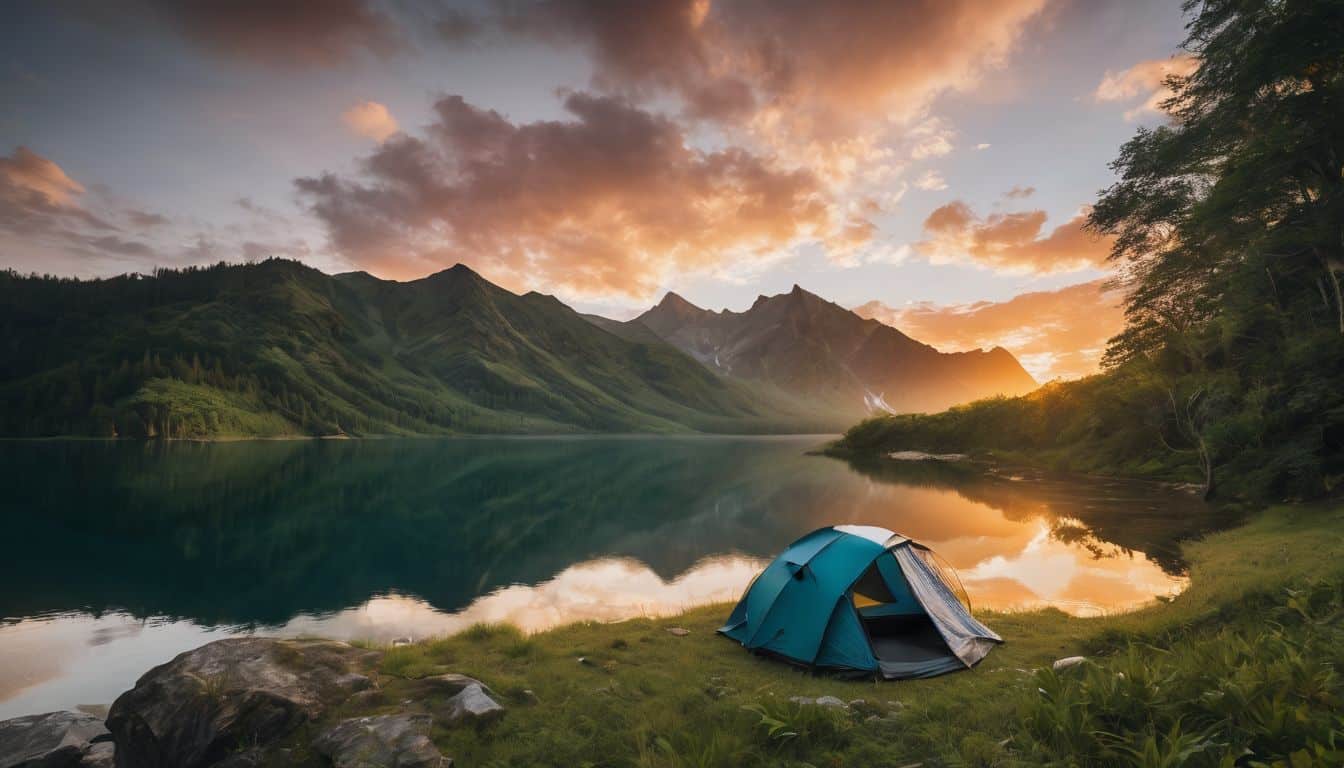Camping near water offers stunning views, exciting activities, and easy access to fresh water. However, it also comes with unique challenges. Whether you’re new to types of camping or an experienced outdoor enthusiast, these safety tips will help you enjoy waterside camping responsibly.
Choosing a Safe Campsite
Select a location at least 200 feet from the water’s edge to avoid potential flooding. Assess the area for signs of previous high water levels and check local regulations. Remember, safety should always be your top priority, especially if you’re camping solo.
Look for natural high ground or slightly elevated areas. Be aware of the surrounding terrain and how water might flow in case of heavy rain. Check for sturdy trees or rocks that could serve as anchors in strong winds. Avoid camping in dry riverbeds or low-lying areas that could quickly become dangerous in flash flood conditions. Always inform someone of your exact camping location before heading out.

Water Safety Precautions
Always supervise children near water and insist on life jackets for inexperienced swimmers. Be aware of dangerous currents in lakes and rivers, and never underestimate the power of moving water. Establish clear boundaries for water activities and enforce a buddy system, even for adults. Learn to recognize signs of drowning, which are often quieter and less dramatic than portrayed in movies.
For river camping, be aware of upstream conditions that could affect water levels. In coastal areas, understand tidal patterns and potential rip currents. Consider bringing throw bags or other water rescue equipment if you plan extensive water activities.
Drinking Water Safety
Treat all natural water sources before consumption. Bring adequate bottled water as a backup, and familiarize yourself with proper water purification techniques. Even clear, running water can contain harmful bacteria or parasites. Boiling is the most reliable method for purifying water, but filters and chemical treatments are also effective. Learn to use multiple purification methods for added safety.
Be aware that some water sources may contain chemical pollutants that aren’t removed by standard purification methods. When in doubt, rely on your brought water supplies. Calculate your water needs generously, accounting for cooking, cleaning, and personal hygiene in addition to drinking.
Campfire and Cooking Safety Near Water
Choose safe locations for campfires away from water and vegetation. Learn proper fire extinguishing techniques and store food securely to avoid attracting wildlife. Create a fire pit with a stone ring if one isn’t provided, ensuring it’s on bare earth away from overhanging branches. Keep fires small and manageable. Never leave a fire unattended, and fully extinguish it before sleeping or leaving the site. This means dousing with water, stirring the ashes, and repeating until the fire is cold to the touch.
For food storage, use bear canisters or hang food bags between trees, at least 10 feet high and 4 feet from any trunk. This practice isn’t just for bears – it protects your food from a variety of wildlife and prevents dangerous animal encounters.
Weather Awareness
Monitor weather forecasts regularly. Be prepared for sudden changes, especially if you’re camping in rainy weather. Have an emergency plan in place for severe weather conditions. Weather near water bodies can change rapidly, with storms developing quickly. Use weather apps or a portable weather radio to stay informed. Be aware of signs of approaching storms, such as darkening skies or sudden temperature drops.
Know the location of the nearest shelter or safe area. In case of lightning, avoid open water, high ground, and tall isolated objects. Have a plan for securing your campsite quickly if strong winds are expected.
Environmental Considerations
Practice Leave No Trace principles rigorously. Properly dispose of waste and greywater, and respect local wildlife and ecosystems. Remember, we are guests in nature’s home. Use biodegradable soap and dispose of greywater at least 200 feet from water sources. Pack out all trash, including food scraps. Avoid disturbing wildlife or plants, especially in sensitive shoreline areas.
Use existing trails and campsites to minimize impact. If fishing, follow local regulations and properly dispose of fishing line and hooks. Consider participating in local conservation efforts or beach clean-ups to give back to the areas you enjoy.
Essential Gear for Water-Side Camping
Pack a first aid kit with water-specific items, emergency communication devices, and waterproof storage for important items. Being prepared can make all the difference in an emergency. Include items like waterproof bandages, anti-bacterial ointment, and treatments for water-related ailments like swimmer’s ear.
Bring a fully charged phone in a waterproof case, and consider a satellite communicator for remote areas. Use dry bags or waterproof containers for electronics, documents, and other moisture-sensitive items. Don’t forget essentials like a flashlight, multi-tool, and emergency blanket.
Activities Safety
Follow guidelines for safe swimming, boating, and fishing. Be aware of water temperature and conditions, and avoid alcohol consumption during water activities. Always check local advisories for water conditions before swimming. In boats, wear life jackets at all times and follow capacity guidelines. For fishing, be aware of local regulations and use caution when handling hooks and fish.
Cold water can be dangerous even on warm days, so be aware of the risks of hypothermia. Establish clear rules for water activities within your group, including designated swim areas and buddy systems.

Conclusion
Camping near water can be an incredibly rewarding experience when done safely and responsibly. By following these tips, you can enjoy the unique benefits of waterside camping while minimizing risks.
For those interested in a specific type of water-adjacent camping, check out our guide on beach camping for more targeted advice.
Remember, the key to a great camping experience is preparation, respect for nature, and a focus on safety. Happy camping!

Leave a Reply